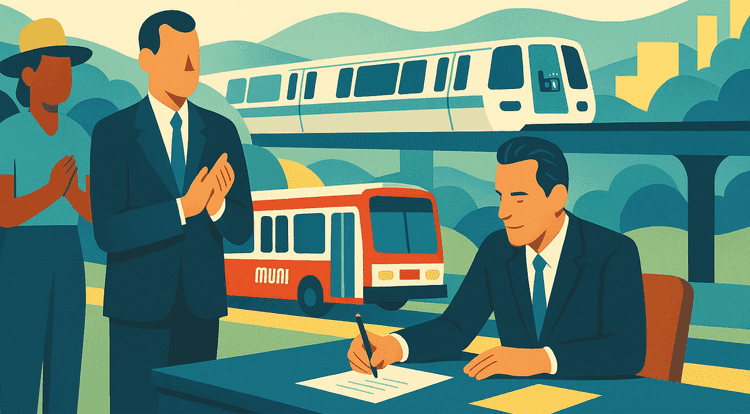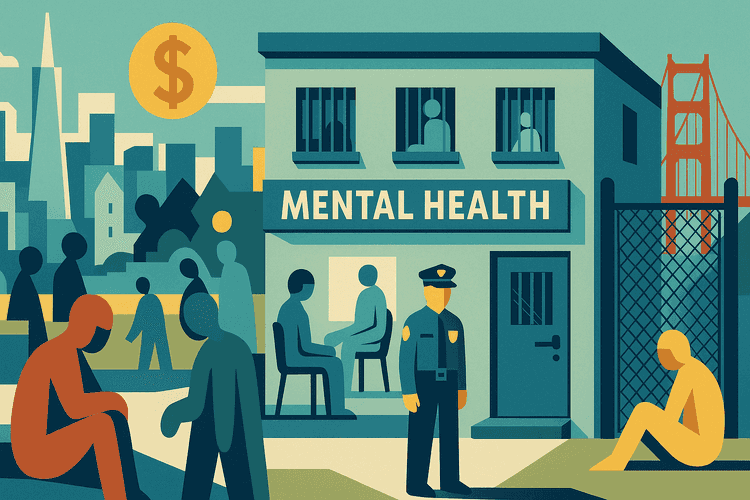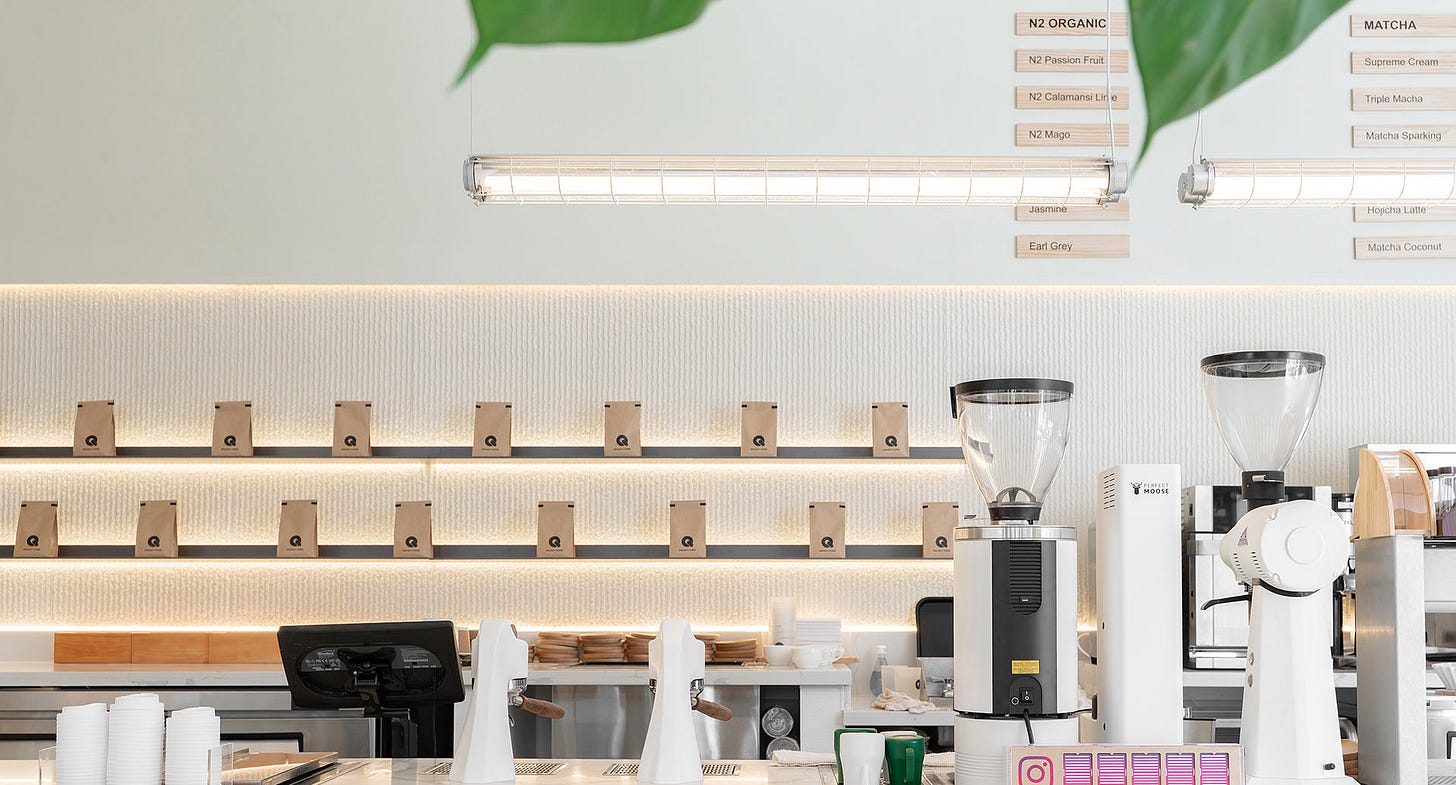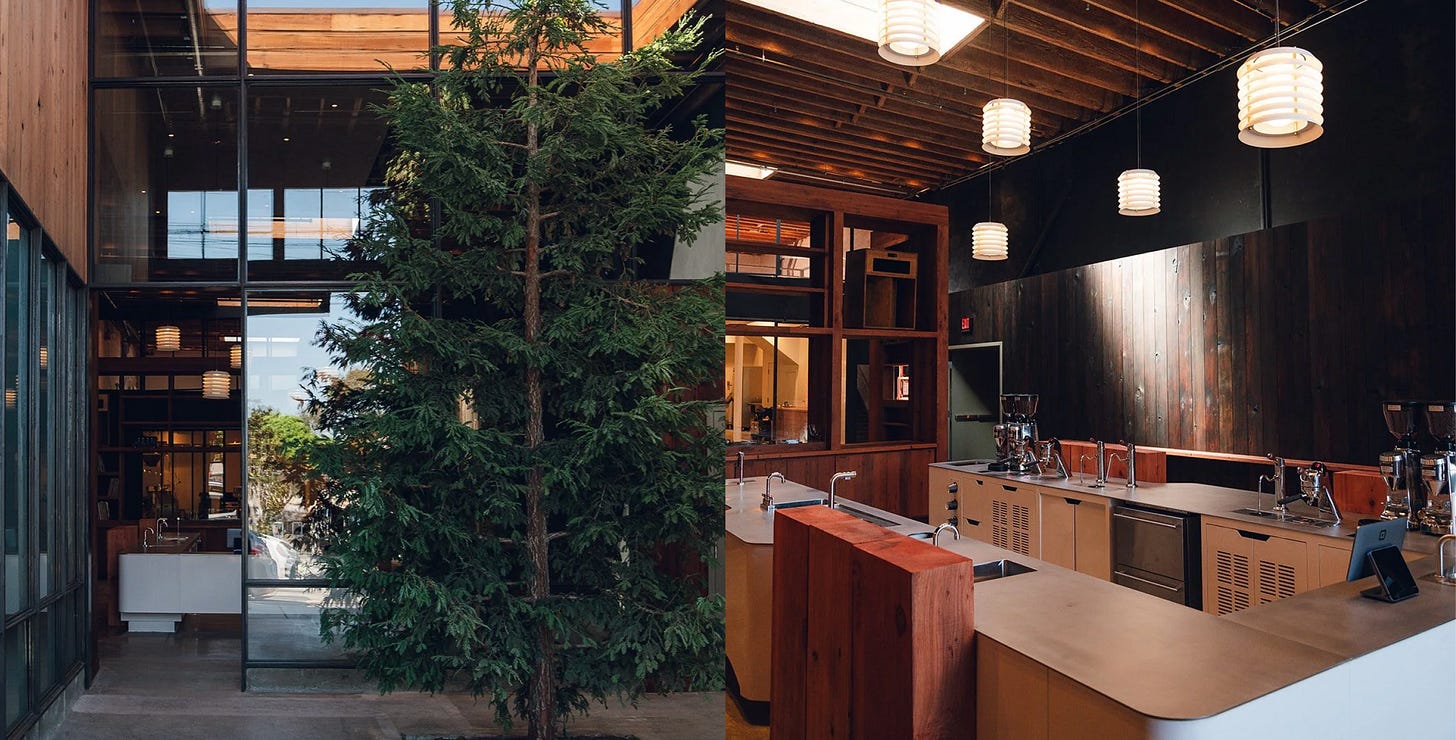State Authorizes Transit Tax to Avert Muni, BART Collapse
PLUS: Shortage of Locked Mental Health Facilities Puts Dangerous Offenders Back on the Streets
What You Need To Know
Here’s what happened around the city for the week of October 12, 2025:
- State Authorizes Transit Tax to Avert Muni, BART Collapse
- Shortage of Locked Mental Health Facilities Puts Dangerous Offenders Back on the Streets
- Melgar Modifies Family Zoning Plan to Exempt Rent-Controlled Buildings
- PermitSF Contract: Scandal or Sound Decision?
Recent & upcoming openings:
- Coffee nerds rejoice for Q Specialty Coffee and Hedge Coffee
State Authorizes Transit Tax to Avert Muni, BART Collapse
Published October 17, 2025
The Facts
The big Muni and BART funding bill will officially be on the ballot next November.
Governor Gavin Newsom signed Senate Bill 63 on October 13, authorizing Bay Area transit agencies to place a sales tax measure on the 2026 ballot to close a massive budget shortfall. The legislation, authored by state Senators Scott Wiener and Jesse Arreguín, would add a half-cent sales tax in four neighboring counties and a full cent in San Francisco, according to Hannah Wiley at The Standard.
The measure targets an impending fiscal cliff: SFMTA faces $300+ million annual deficits beginning in July 2026, while BART projects deficits up to $400 million per year beginning in 2027. Without new revenue, Muni would have to slash service frequency by 50% on many lines, and BART could run trains as infrequently as once per hour.
State law requires legislative authorization before regional agencies can place tax measures on local ballots. SB 63 provides that authority. In addition to this regional measure, Mayor Daniel Lurie separately announced plans for a parcel tax for Muni on the same November 2026 ballot.
The Context
The funding crisis stems from the end of federal COVID emergency bailouts, combined with a slow and incomplete ridership recovery. While Muni ridership reached 75% of pre-pandemic levels by 2024, BART has recovered less than half of its pre-pandemic ridership, leaving both systems with huge operating shortfalls.
But even full recovery wouldn’t solve the problem. Even if Muni ridership returned to 100% of pre-COVID levels with inflation-adjusted fares, fare revenue would only grow an additional $100 million annually, closing just one-third of SFMTA’s $320 million deficit. Similarly, full parking recovery would only add $70-90 million yearly, still leaving SFMTA with a funding gap of approximately $100 million annually, even under best-case scenarios.
The crisis exposes structural funding vulnerabilities. SFMTA relies heavily on San Francisco’s General Fund—its largest single funding source—supplemented by fares, parking fees, and grants. BART depends on sales tax revenue for roughly 40% of its operating budget, with the remainder from fares and other sources. These revenue streams are vulnerable to economic downturns, ridership fluctuations, and changing travel patterns, and generally are not keeping up with inflation and rising operational costs.
The GrowSF Take
This legislation provides critical tools to address a genuine structural funding gap that goes beyond operational inefficiencies. The math is stark: even with perfect ridership and parking recovery, Muni would still face a $100+ million annual deficit due to revenue growing slower than inflation impacting operating costs.
Our transit agencies should continue pursuing operational reforms—consolidating administrative functions, modernizing fare systems, and implementing performance-based budgeting, but these improvements alone can’t bridge a gap this large. The city needs sustainable, diversified revenue streams that grow with inflation.
Beyond emergency tax measures, longer-term solutions could include congestion pricing, employer transit taxes, value capture from transit-oriented development, or dedicated state funding. But for now, this sales tax measure is a necessary investment in preserving the transit infrastructure that keeps San Francisco, and the whole Bay Area economy, functioning.
Shortage of Locked Mental Health Facilities Puts Dangerous Offenders Back on the Streets
Published October 17, 2025
The Facts
Gilberto Lopez-Duarte had been under involuntary conservatorship since 2022 at Crestwood Healing Center for prior sexual offenses. In July, he was expelled from Crestwood after allegedly sexually assaulting a fellow patient at the locked psychiatric facility, according to Jonah Owen Lamb at The Standard. He then spent three months in SF General’s secure psychiatric ward while city officials desperately searched for another locked facility willing to accept him.
No facility would take him. On October 2, with no other options, officials placed Lopez-Duarte in unlocked transitional housing in the Mission. Eight days later, police arrested him again—this time for drug possession and another alleged sexual assault.
The victim was a homeless woman.
The Context
GrowSF research revealed California systematically dismantled its state hospital system, slashing beds from 37,000 in the 1950s to just 5,724 today—while the state’s population more than doubled. Today, only 22 San Franciscans are housed in state hospitals.
Making matters worse, federal IMD exclusion rules ban Medicaid reimbursement for psychiatric facilities with more than 16 beds. This forces San Francisco taxpayers to cover the cost with zero federal or state support. When private facilities like Crestwood refuse problematic patients, the city literally has nowhere else to turn.
The math is stark: California operates 11.7 psychiatric beds per 100,000 residents, compared to the national average of 22.7 beds. San Francisco’s most dangerous psychiatric patients are competing for a handful of spots in an infrastructure that was deliberately destroyed.
The GrowSF Take
This preventable tragedy exposes a psychiatric care system hollowed out by decades of policy failures. California dismantled state hospitals in the name of “deinstitutionalization” but never built the alternatives it promised. Instead, the state shifted the burden to cities.
Cycling dangerous individuals between emergency rooms, jails, and unlocked housing protects no one. Not the mentally ill who need intensive care, not the public who deserve safety, and not the vulnerable people who are victimized.
The State has dragged its feet for too long, and even still blames Ronald Reagan for the mess. But it’s been almost 60 years since Reagan signed the bipartisan bill dismantling our mental health infrastructure, and we now have no one to blame but ourselves for letting it continue. It’s time for California to step up, build the necessary locked psychiatric facilities, and fund them properly.
Melgar Modifies Family Zoning Plan to Exempt Rent-Controlled Buildings
Published October 17, 2025
The Facts
Supervisor Myrna Melgar’s amendment to exempt buildings with three or more rent-controlled apartments from the Family Zoning Plan’s upzoning provisions has been accepted. The amendment prevents redevelopment of 84,000 rental units in 11,700 buildings, according to analysis by Io Yeh Gilman and Kelly Waldron at Mission Local.
Melgar’s amendment responds to concerns about demolition of pre-1979 housing—the only buildings in San Francisco subject to rent control. Mayor Lurie accepted the amendment, saying “Supervisor Melgar’s new amendment to advance our Family Zoning plan will strengthen tenant protections while keeping our city on track to meet state housing mandates.”
The amendment will be formally introduced at the Land Use Committee meeting on October 20.
The Context
The Family Zoning Plan was approved by the Planning Commission in September 2025 and validated by the state to create capacity for 36,000 new housing units.
Melgar’s amendment leverages a technical aspect of the state’s housing element formula, which already assumed buildings with more than four units constructed before 1979 would not be redeveloped. By setting the threshold at three units instead of four, her accepted amendment prevents redevelopment of additional rent-controlled housing while maintaining compliance with state mandates.
Two-unit buildings remain subject to upzoning under the plan, affecting approximately 20,700 properties. However, only about 16% of these buildings are receiving height limit increases, as most are not located on the commercial and transit corridors targeted for the bulk of the upzoning.
The GrowSF Take
This is a nice political victory for Supervisor Melgar that doesn’t meaningfully change the housing capacity created by the Family Zoning Plan. While we don’t love the idea that rent-controlled tenants will be stuck in old housing forever, there’s also no reason to fight this small change.
The best solution for preserving rent-controlled housing is to build more housing overall, which the Family Zoning Plan does. By creating more housing options, we reduce pressure on existing rent-controlled units and help keep rents in check across the board. The best rent control is a surplus of high quality housing options.
PermitSF Contract: Scandal or Sound Decision?
Published October 17, 2025
The Facts
Ned Segal, Mayor Lurie’s deputy overseeing housing and economic development, awarded a $5.9 million contract to OpenGov for the city’s PermitSF overhaul.
OpenGov scored lower than competitor Clariti on some key metrics determined by city staff, and would reportedly cost much more than Clariti, according to Gabe Greschler and Josh Koehn at The Standard. However, OpenGov has many more clients and a longer track record than Clariti.
The Context
Both companies bring different capabilities and significantly different track records to government permitting:
OpenGov serves over 2,000 government agencies nationwide with comprehensive budgeting, permitting, and transparency software. The company has reached 500 permitting partnerships and claims to help governments increase efficiency by over 30%.
Clariti, formerly BasicGov, specializes specifically in permitting software for governments, though only serves “dozens“ of governments across the country. City officials also noted concerns about Clariti’s implementation delays at the Department of Public Works.
The GrowSF Take
This decision highlights a fundamental tension in government procurement: Should cities prioritize staff preferences and lowest bidders, or bet on proven scale and vendor relationships? As outside observers, we lack the information to fairly judge the merits of OpenGov versus Clariti.
SF’s permitting system is genuinely broken, using 20 different software platforms that contribute to endless delays. And while we don’t love that OpenGov was significantly more expensive than Clariti, we’re not convinced that the lowest bidder is always the highest value. We also recognize that OpenGov’s more widely-used platform may offer more long-term value and implementation guarantees, especially given the city’s existing issues with implementing Clariti at DPW.
So we think there’s more smoke than fire to this story, but if the city is going to pay a premium for OpenGov, we hope they negotiated strong performance metrics and accountability into the contract. The city deserves a permitting system that works, and we hope this decision helps deliver that outcome.
Recent & upcoming openings
A great city is constantly changing and growing, let’s celebrate what’s new!
Coffee nerds rejoice for Q Specialty Coffee and Hedge Coffee
If, like me, you are a little too in to coffee, you’ll be sure to bee-line to Q Specialty Coffee today (October 18th), and Hedge Coffee on October 25th. Two great offerings are about to grace our under-caffeinated streets.
Q Specialty Coffee in Laurel Heights
WHEN: Opens today, October 18th
WHERE: 3490 California St
Opening today, October 18th, Q Specialty Coffee brings traditional favorites like pour overs and cappuccinos alongside new-fangled drinks like “Sparkling Lime Espresso Cloud.” I’m a sucker for a great cap, but I am tempted by the Spiced Chai Espresso Cloud.
It’s run by Cyrus Shen who launched “Toast N’Egg” in the Mission last year. Since then, Cyrus “got seriously into coffee, earning his coffee grading certifications from Bay Area legend Willem Boot,” according to Paolo Bicchieri at SF Eater. (Click that link, it’s an excellent write-up!)
Hedge Coffee in the Mission
WHEN: Opens October 25th
WHERE: 434 Shotwell St
What started as a pop-up and coffee catering for events grew into one of the finest roasters in the Bay Area, and now they’re set to open their first HQ & cafe in the Mission, according to Paolo Bicchieri at SF Eater. They will serve all of the classics, roasted on-site and brewed to third-wave perfection. Coffee nerds will get a special thrill checking out their high-tech roasting and sorting equipment.
Don’t expect to settle in with your laptop and work all day, though. With just 20 seats and an active roasting operation, this is more for lovers of coffee and beautiful spaces than remote workers.
We’ll see you there, I’m sure!







